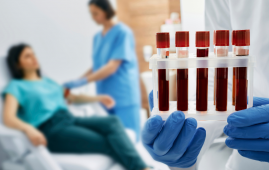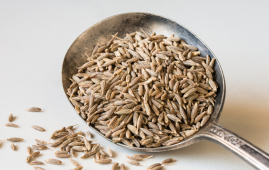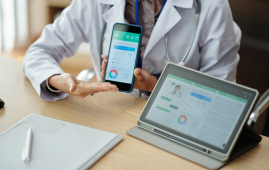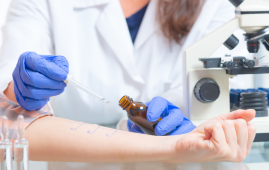

Real-Time Pathogen Surveillance Software Transforms Environmental and Clinical Metagenomics
The global healthcare and environmental sectors are entering a new phase of rapid microbial detection. Researchers at the Earlham Institute have developed MARTi, an open-source metagenomics software that delivers real-time pathogen surveillance, allowing users to analyze, classify, and visualize microbial DNA as sequencing occurs. Published in Genome Research, MARTi bridges the gap between laboratory sequencing and immediate field application, significantly shortening response times to microbial threats.
Unlike traditional post-sequencing analysis tools, MARTi provides instant results by processing sequencing data in real time. This approach not only enhances the speed of pathogen identification but also supports on-site decision-making in clinical, agricultural, and biosecurity settings.
Explore All Infectious Disease CME/CE Conferences and Online Courses
MARTi: Field-Ready, Flexible, and Scientifically Robust. A New Era in Real-Time Pathogen Surveillance
MARTi (Metagenomic Analysis in Real Time) was designed with accessibility in mind. According to Dr. Ned Peel, postdoctoral research scientist at the Earlham Institute, the tool is operationally lightweight, enabling taxonomic classification on a standard laptop or through a high-performance computing system.
Its graphical user interface (GUI) makes complex metagenomic data easier to interpret, allowing users to create publication-ready graphs, compare results, and monitor pathogen distribution seamlessly. For clinicians, this capability means faster recognition of infectious agents and timely therapeutic intervention. For public health and biosecurity professionals, it supports immediate response to emerging threats in water, soil, or air.
MARTi is now widely applied in research collaborations across diverse environments—from preterm infant pathogen studies to marine biosurveillance. The tool’s adaptability and real-time performance make it a core component of the Earlham Institute’s pathogen tracking initiatives.
AirSeq and Beyond: Monitoring Pathogens in the Air
One of MARTi’s most innovative applications is in AirSeq, a system co-developed by the Earlham Institute and the Natural History Museum, London. AirSeq collects airborne DNA, sequences it, and processes the results through MARTi, offering continuous airborne pathogen monitoring.
Dr. Richard Leggett, Group Leader at the Earlham Institute, emphasized that MARTi’s real-time functionality enables the possibility of field-based alert systems—for example, a self-contained monitoring box in a farm field that could autonomously detect airborne pathogens and issue alerts to farmers or health authorities.
With customizable parameters and database integration, MARTi ensures flexibility for specific research needs. Its real-time surveillance capabilities are expected to strengthen infection control, disease prevention, and public health preparedness, making it a promising tool for healthcare professionals, microbiologists, and epidemiologists worldwide.
Source:
more recommended stories
 Bright Nights May Increase Stroke, Heart Failures in Adults
Bright Nights May Increase Stroke, Heart Failures in AdultsBright Nights are tied to increased.
 Cannabis Use Linked to Regular Tobacco in US Youth
Cannabis Use Linked to Regular Tobacco in US YouthCannabis Use and Tobacco Risk: A.
 Mediterranean Diet Reduces Endometriosis Risk in Women
Mediterranean Diet Reduces Endometriosis Risk in WomenMediterranean Diet and Endometriosis: A Promising.
 Night Shifts May Trigger Irritable Bowel Syndrome (IBS)
Night Shifts May Trigger Irritable Bowel Syndrome (IBS)Night Shifts and Digestive Health: Linking.
 Blood test shows promise for faster ALS diagnosis
Blood test shows promise for faster ALS diagnosisSummary / Key Points A UCLA.
 Caraway seed chemistry yields anticonvulsant leads
Caraway seed chemistry yields anticonvulsant leadsA team led by UNLV researchers.
 WHO and EU Strengthen Digital Health in Africa
WHO and EU Strengthen Digital Health in AfricaThe World Health Organization (WHO) and.
 Quitting Smoking Slows Memory Decline, Study Finds
Quitting Smoking Slows Memory Decline, Study FindsQuitting smoking is linked to slower.
 Breakfast Skipping Linked to Metabolic Syndrome
Breakfast Skipping Linked to Metabolic SyndromeBreakfast Skippers May Face Metabolic Consequences.
 Growing Patient Involvement in Japan’s Allergy Research
Growing Patient Involvement in Japan’s Allergy ResearchThe Growing Importance of Patient Involvement.

Leave a Comment